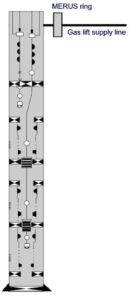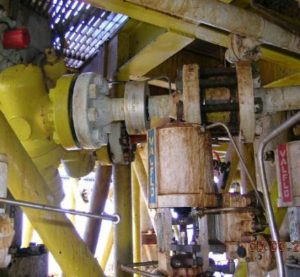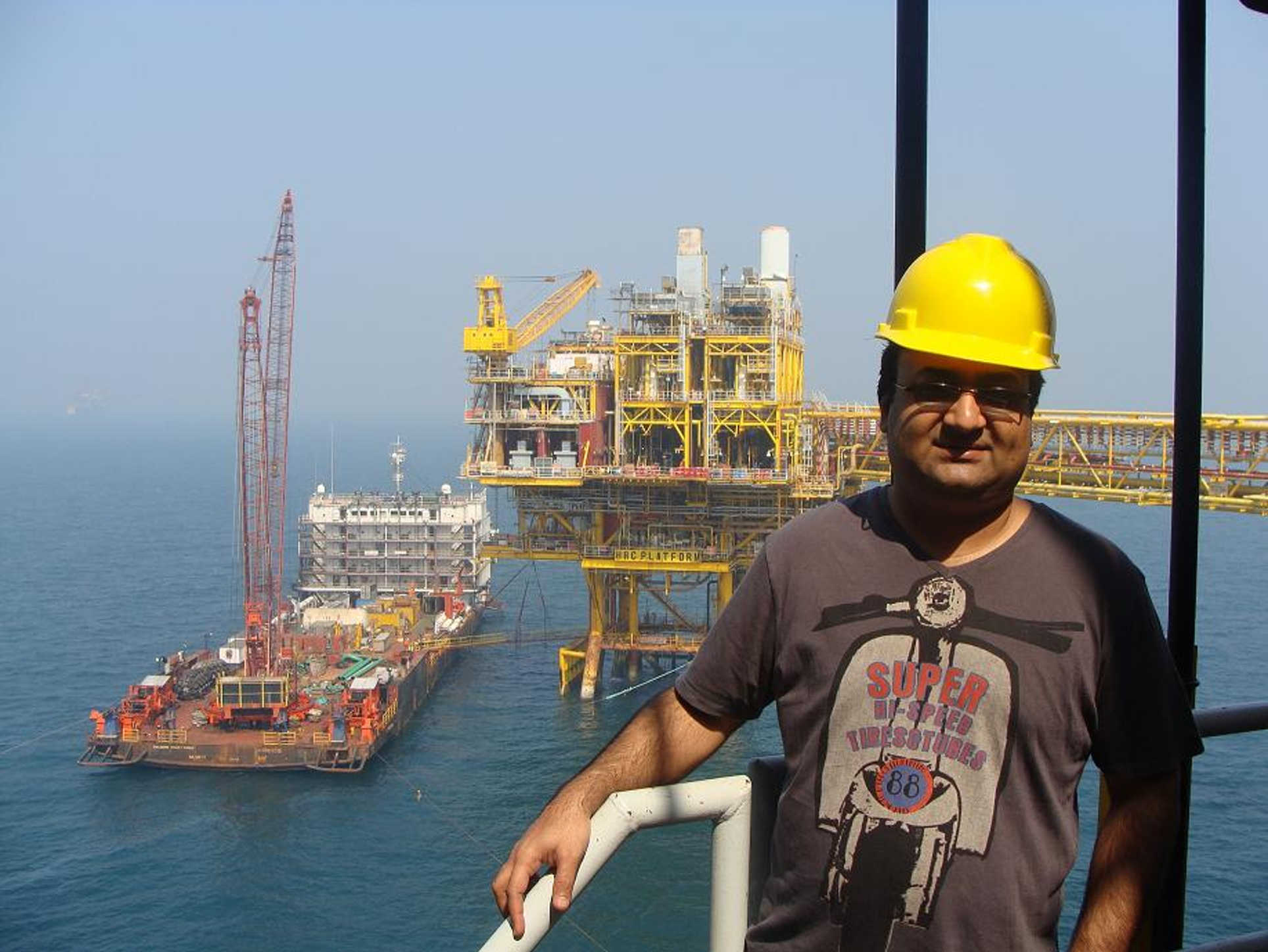Oil well offshore using gaslift, South East Asia
 The St. Josephs Field has more than 35 wells, whereas most of them are supported by gas lifts. The gas is introduced to the well at a depth of app. 2600ft. See also the drawing to the right. Wax is deposited in the production tubing, due to the drop in temperature along the production tubing. Severe wax depositions is present at the gas lift valve mandrel are due to significant temperature drop caused by injection of lift gas. The reason because the temperature of the introduced gas is like surface temperature, where as the temperature of the crude is around 90°C.
The St. Josephs Field has more than 35 wells, whereas most of them are supported by gas lifts. The gas is introduced to the well at a depth of app. 2600ft. See also the drawing to the right. Wax is deposited in the production tubing, due to the drop in temperature along the production tubing. Severe wax depositions is present at the gas lift valve mandrel are due to significant temperature drop caused by injection of lift gas. The reason because the temperature of the introduced gas is like surface temperature, where as the temperature of the crude is around 90°C.
Before:
The well produces 1300bdp and the production declined in accordance to the wax deposits build up. To remove this wax deposits regular cleaning by wireline technique was required. The wax cutting frequency has been 3 times a month with wax concentrated found from 240 ft to 2600 ft. In average there has been 6 cleaning runs required to clean the wax deposits. This well produced historical in between 15% to 23% emulsion.
The Merus Ring was installed direct on the gaslift line, before the line going down the well. The gas, which is considered dry, carries 40ppm chemicals. This little humidity is enough to carry down the Merus effect in the crude.
After:
 After the installation of Merus the production is running stable, no decline in the production was found. The well was producing for 89 days the same amount of oil.
After the installation of Merus the production is running stable, no decline in the production was found. The well was producing for 89 days the same amount of oil.
Three month after installation, there was done a cleaning cycle at the well in order to see what is going on. There was no obvious wax deposits found in the tubing, there was no decline in the production. The 3-inch scratcher runs down smoothly to 2699 ft, followed by 2.735-inch drift run, without any problem. So all the way down was clear of wax deposits.
At the same time is was observed the emulsion level has dropped to only 3% to 10%.
Why the emulsion got less at the same time? It is known since long there is a correlation in between wax deposits in the tubing and the forming of emulsion.
The obvious reason, wax deposits are responsible for turbulence inside the pipe. This turbulence can be seen as a mechanical force, which is needed to produce emulsion. If there are no wax deposits, the flow of the crude is laminar and smooth, so less shear forces and less forming of emulsion, are the result.
Conclusion:
There is clear evidence there is
- next to no build up of wax deposits in the tubing
- at the same time produced emulsion has dropped from the range of 15-23% to 3-10%
Having no or far less wax deposits in the well, requires far less wire lining. Wire lining offshore is rather expensive, manpower and equipment has to be brought to the platform either by ship or by helicopter, weather conditions are not always in favour, etc. So there is a big potential of saving costs.
Producing less then half of the emulsion can be even more important. Having less emulsion from the well, means less problems downsteam in the trunk and flow lines, as well in the separation plants. There is a tremendous potential of saving demulsifier all the way down from the well to the separation. As demulsifier is in a lot of oil companies the chemicals producing the single-most cost.

